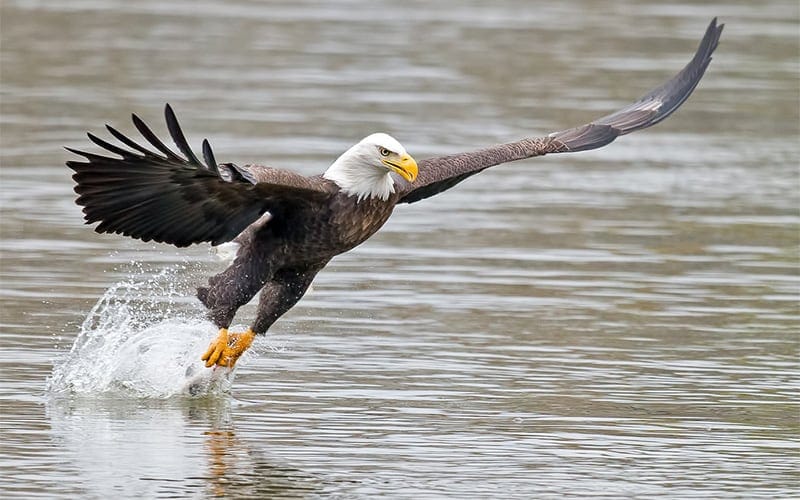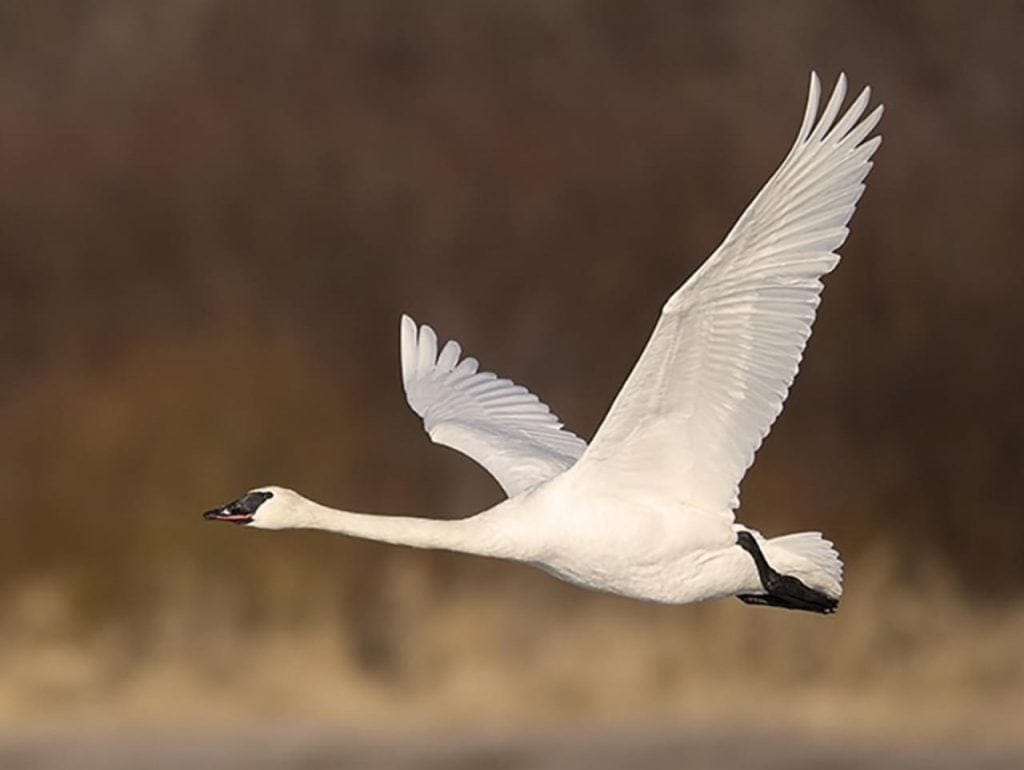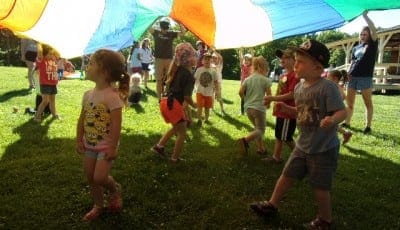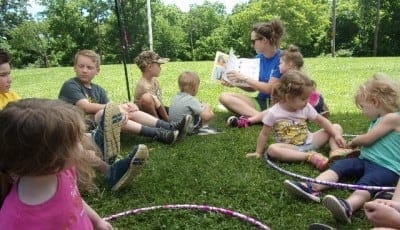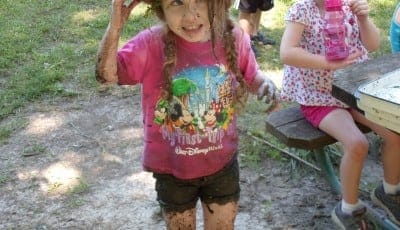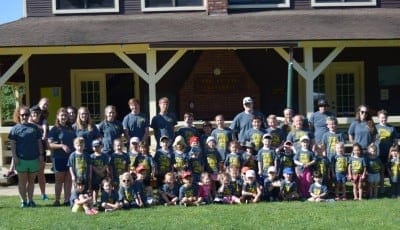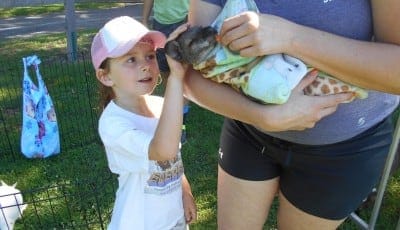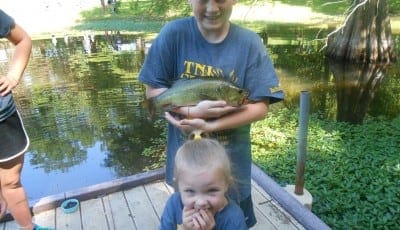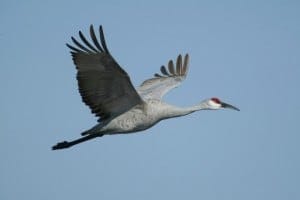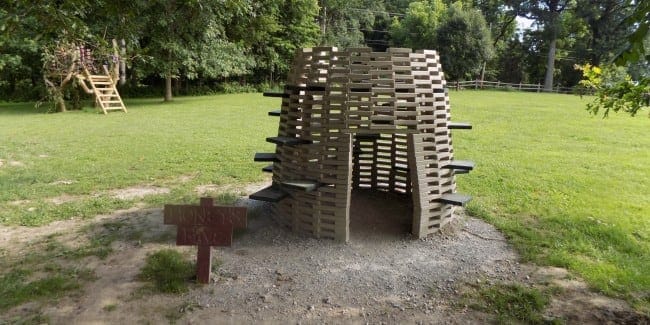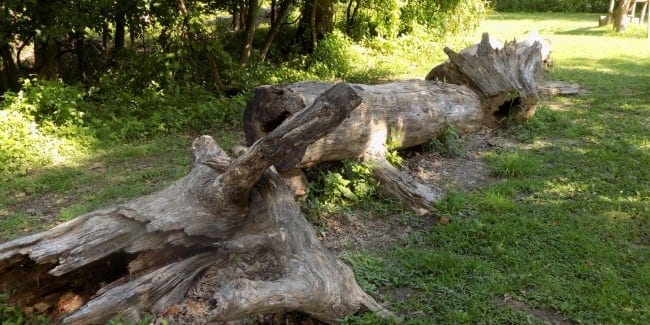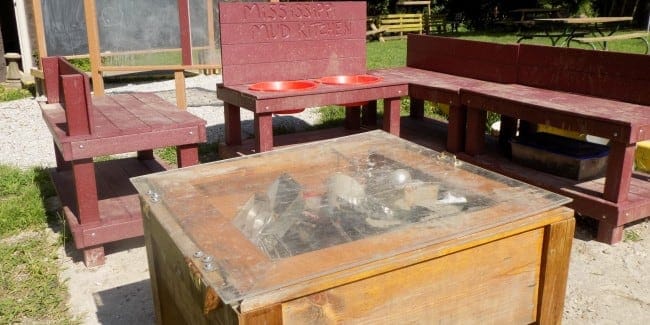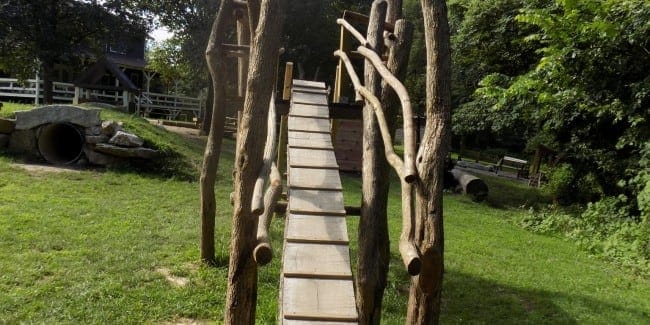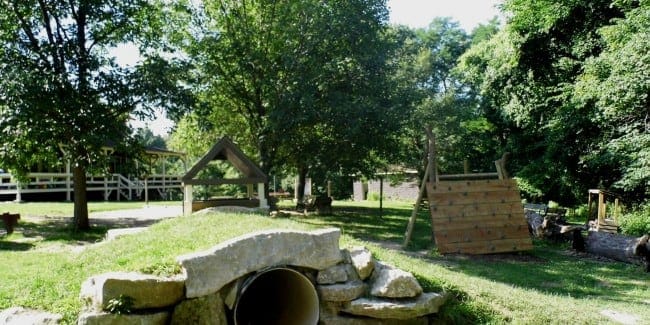Education Blog
When it comes to environmental education, the TNI education staff knows it all. Read their musings on nature. Have specific questions? Feel free to contact Lauren Scull, Education Director at (618) 466-9930 or lscull@TheNatureInstitute.org or Dave Schiber, Environmental Educator at dschiber@thenatureinstitute.org
Thank You for a Great Summer!
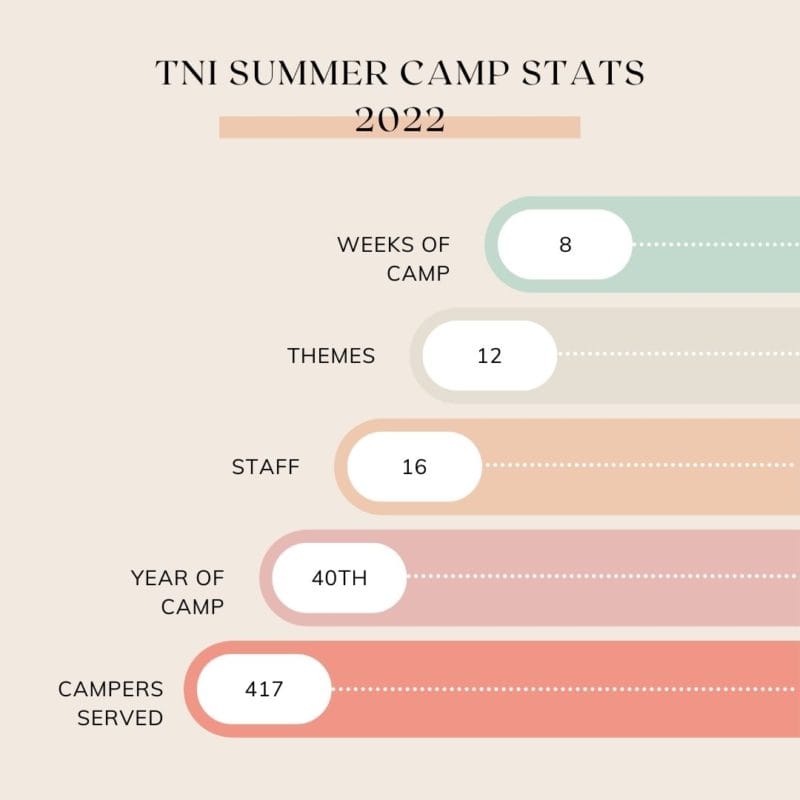
Our 40th season of camp has come to an end! We enjoyed 8 weeks of creek walks, water games, science experiments, nature exploration, and artistic expression. We served 417 campers between the ages of 4 and 14. Many of our campers came for multiple weeks and tried out our variety of themes!
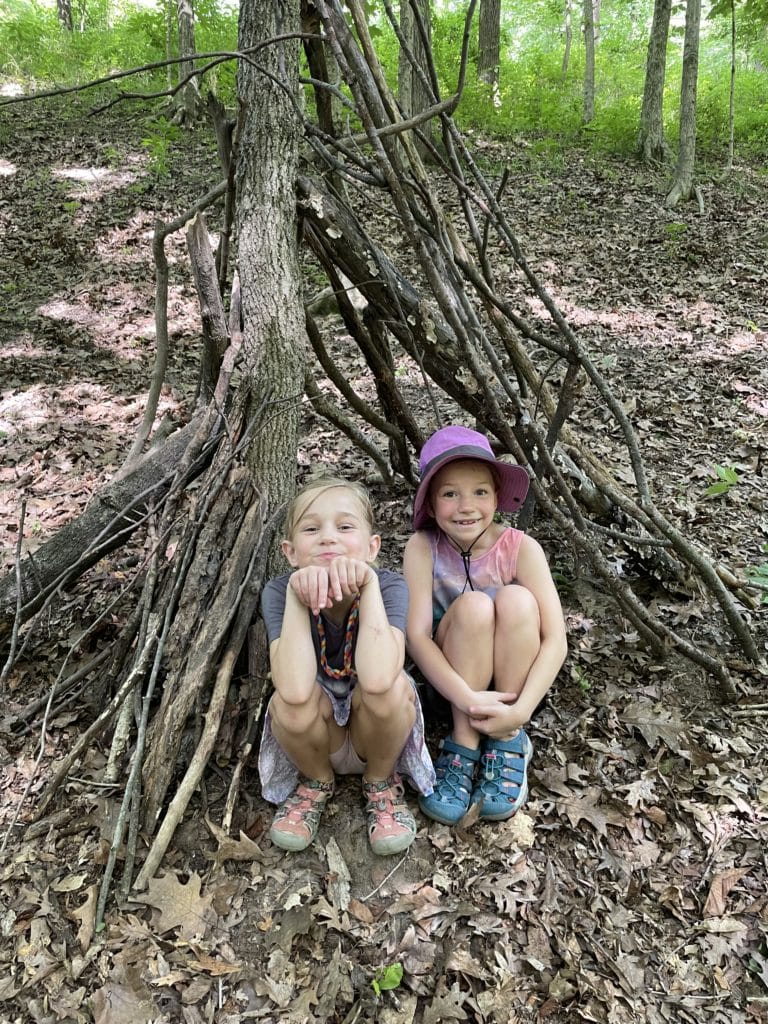
As we turn from the summer season, our fall programs begin! Dave and I are so excited for the return of our school-year programs, like Kids Night Out, Outdoor EDventure Day, Discovery Nature Club, and Knee High Naturalists. Pokemon Go for a Hike will also return this fall, as well as Field Guides. Our adult program, Yoga + Hike, will also be offered once a month this fall.
There are brand new programs in the works as well! Tiny Trekkers, a weekly drop off program for ages 3 – 5, begins in September. We’re particularly excited for this new program, as it really gives us a chance to get to know these families very well. This is our first weekly drop off program and our first drop off program for preschoolers! Sunset and S’mores also begins this fall – a program that includes a twilight hike and s’mores.
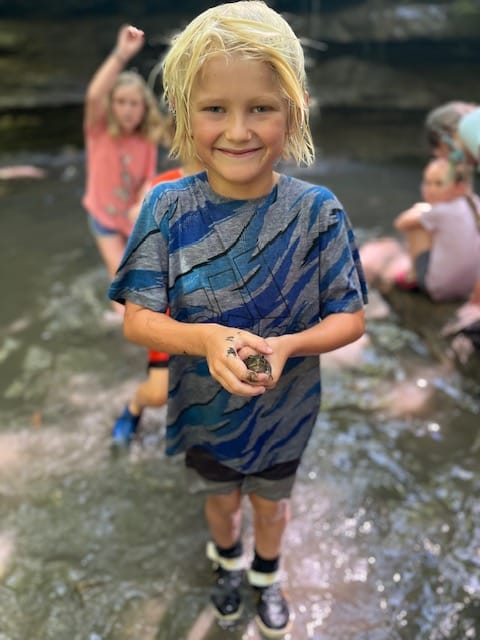
We hope your campers will join us for our exciting, year round programming. If nothing else, we hope you won’t get lost on the way to Salamander Creek when your camper tries to show you where they went over the summer!
Hope to see you soon!
TNI Education Team
It’s Winter… Wish You Were Here!
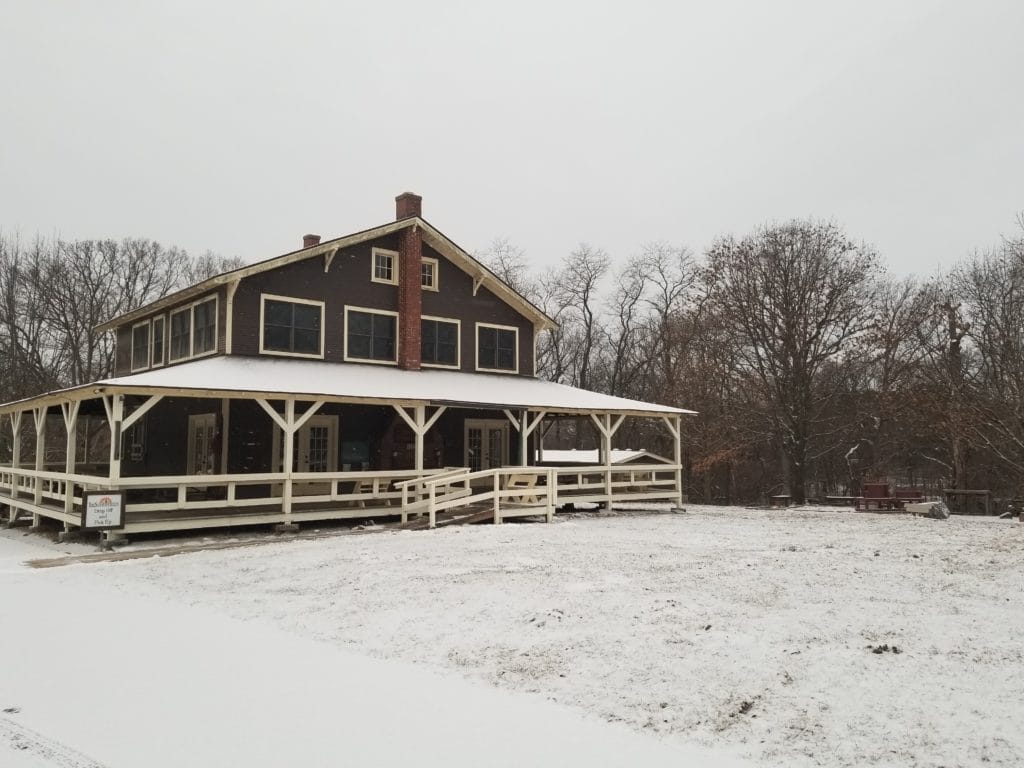
It’s a snowy day in January and this place is absolutely gorgeous! Since we are closed to the public during winter, I spent some time walking around and snapping off photos so that you might get some appreciation for TNI’s beauty during the winter. Enjoy!
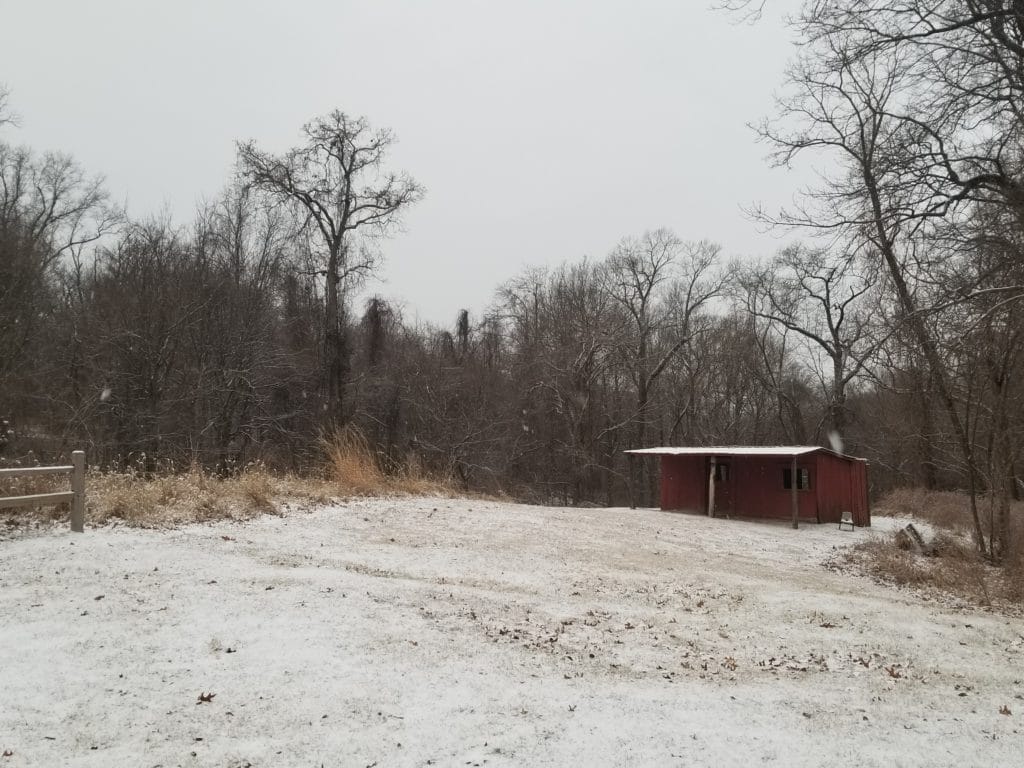
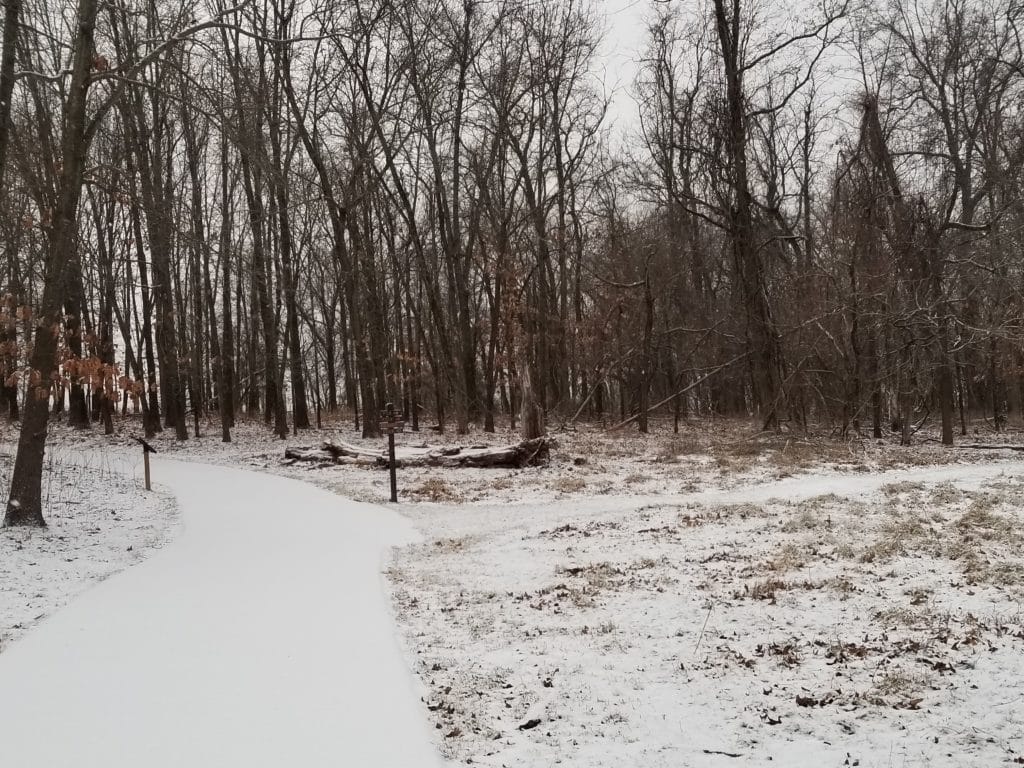
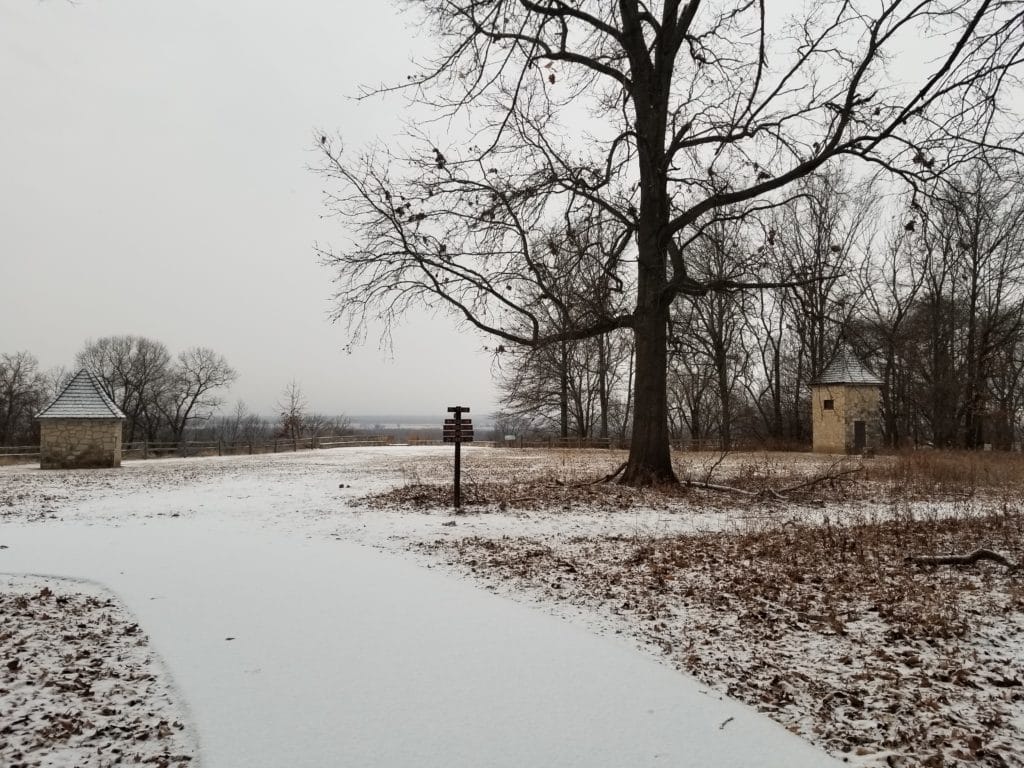
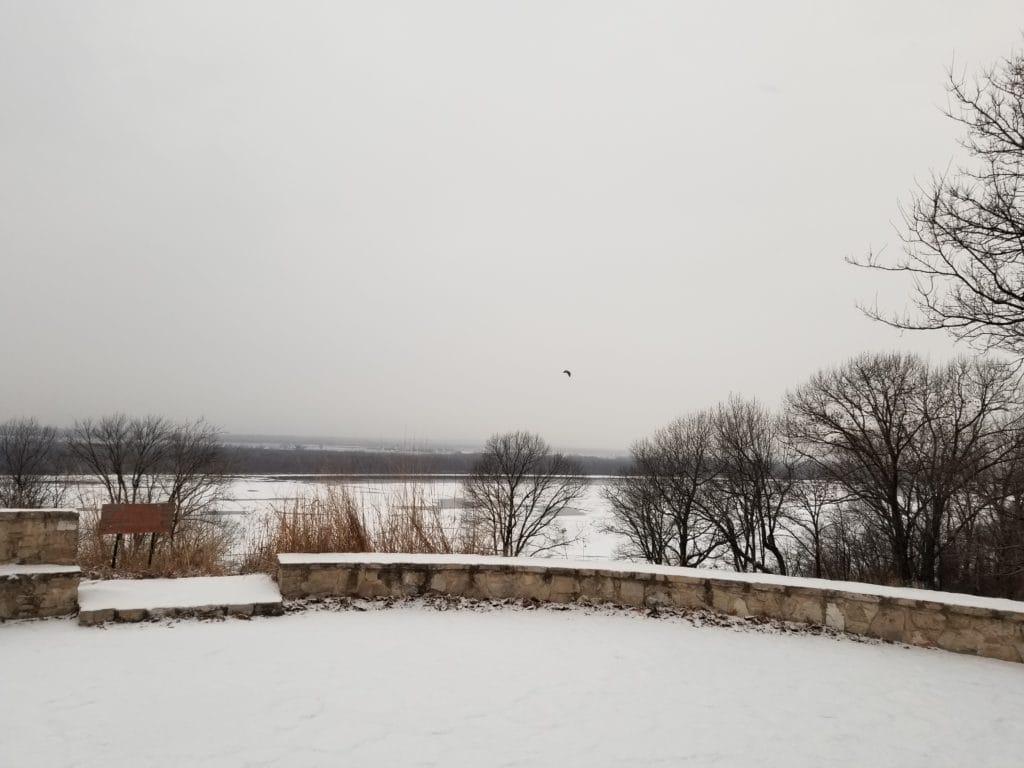
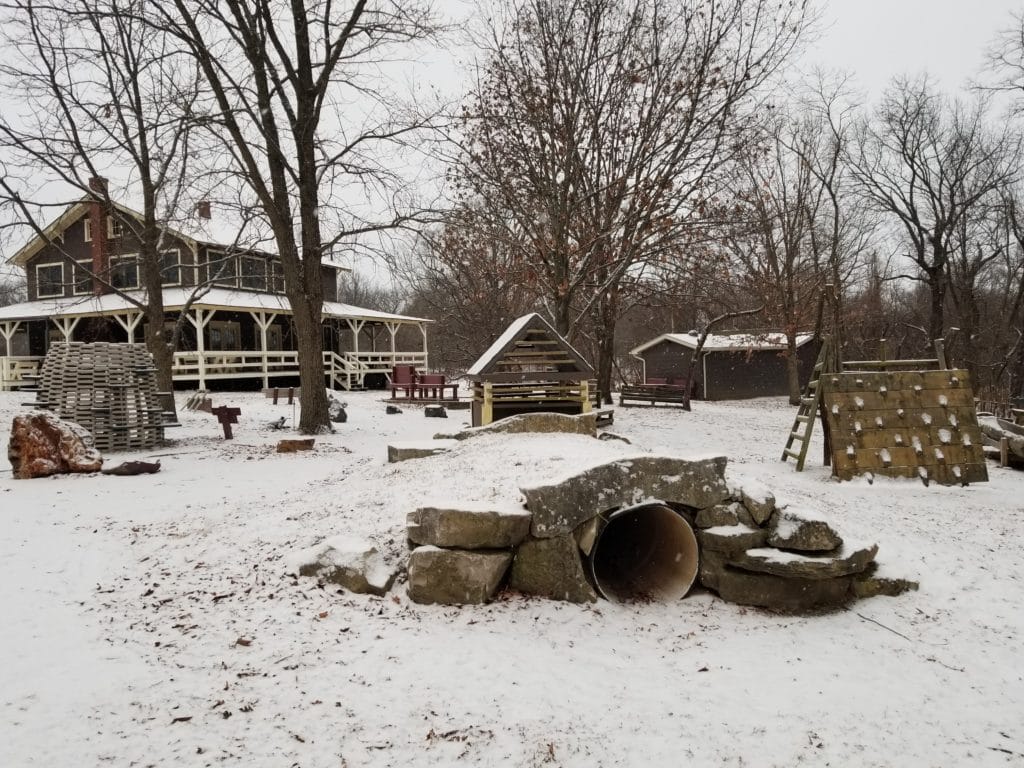
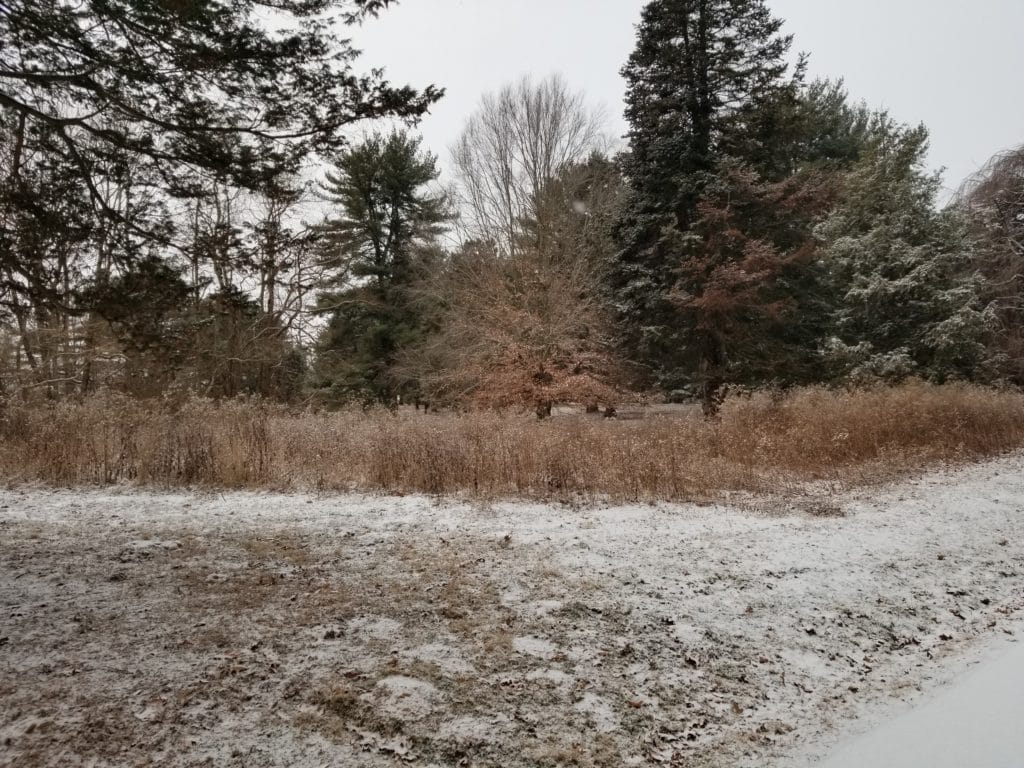
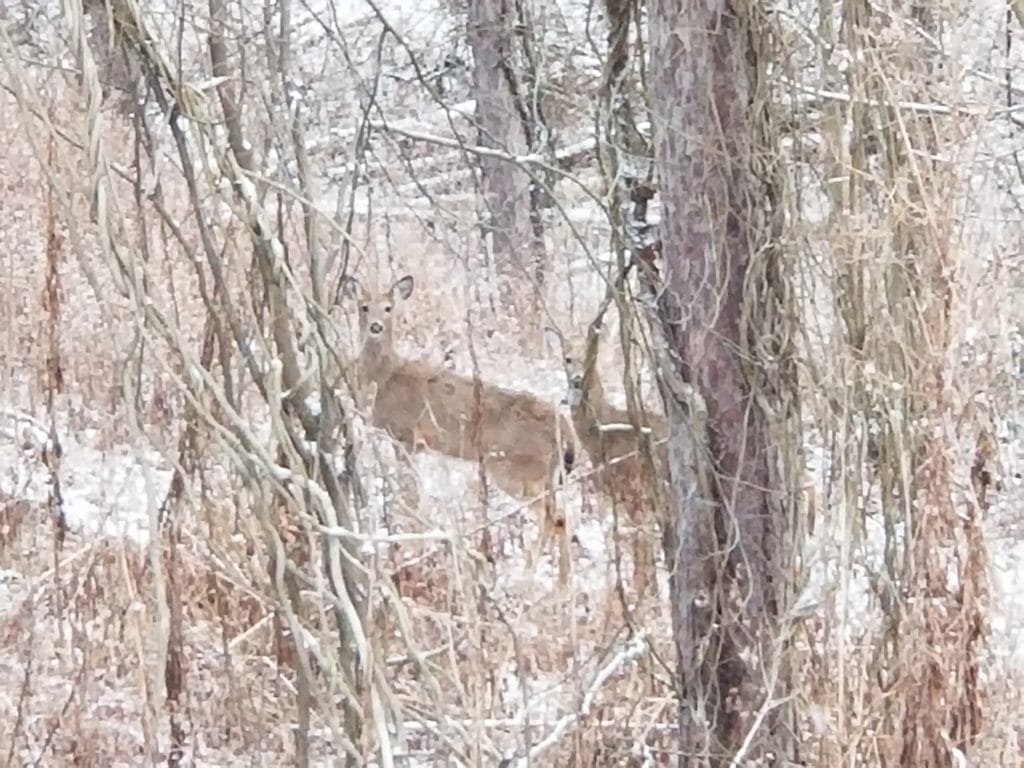
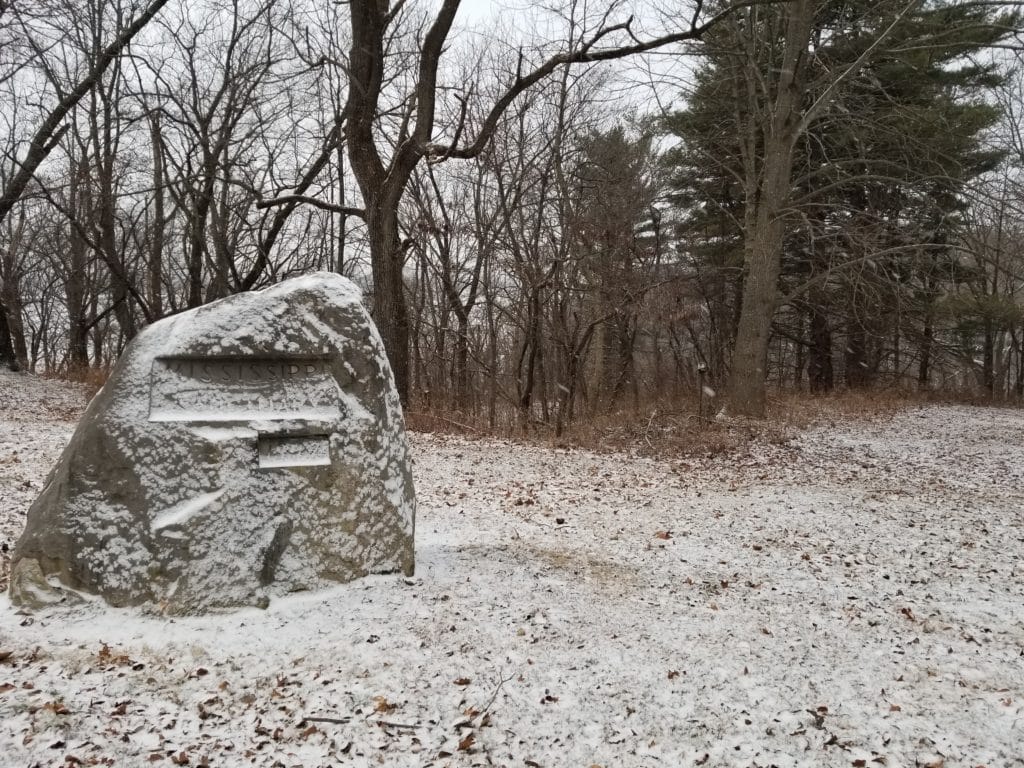
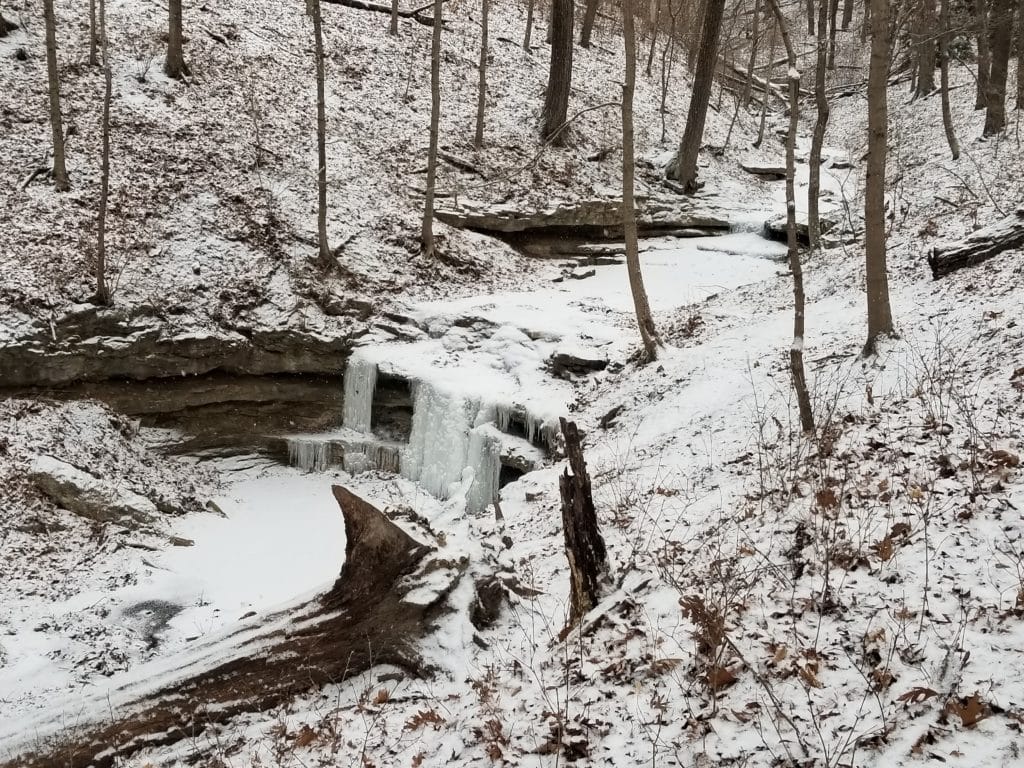
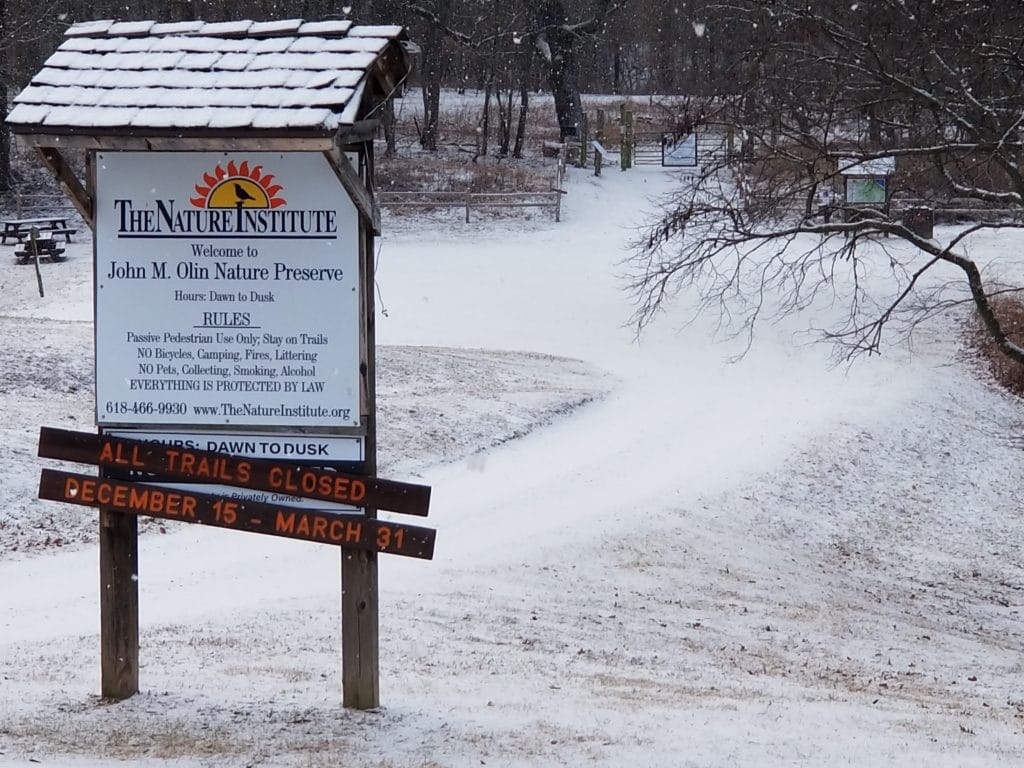
I feel so lucky and blessed to be able to be here at this time and to be able to see these things, feel the bite of the cold air, and smell the freshness of the winter breeze. I wish you could experience these things too! But, it turns out that you are in luck. Even though we are closed to the public during winter, we have a new program available called “Winter Private Hikes,” where you can reserve a staff-led hike for up to ten people. Check it out here. I can’t wait to show you around here in the wintertime!
Fall Leaves
 Running through fallen leaves, crunching them underfoot with that smell of wet earthy goodness assaulting your senses. That is one of the best parts of fall. Once the leaves have fallen and become brown and crunchy they lose some of their visual appeal, but this is when they become even more important for the native insects and the soil microbes.
Running through fallen leaves, crunching them underfoot with that smell of wet earthy goodness assaulting your senses. That is one of the best parts of fall. Once the leaves have fallen and become brown and crunchy they lose some of their visual appeal, but this is when they become even more important for the native insects and the soil microbes.
Leaves become safe places for adult and larval insects to overwinter, and there are still unhatched eggs attached to some of the leaves. Red-banded hairstreaks lay their eggs on Oaks and Sumacs and then overwinter in the leaf litter as caterpillars. Isabella Tiger Moths overwinter as a common caterpillar we all know and love, the Wooly Bear, in the leaf litter. And Luna Moths overwinter in their cocoon within the leaf litter.
Piles of leaves become a place where birds can find food during the lean months of winter. Brown Thrashers, Eastern Towhees, and Gray Catbirds can be found throwing leaves in the air looking for a yummy snack within.
 Fallen leaves are also a warm place for many insects and other garden residents to spend the winter. Worms both eat the leaves and take advantage of
Fallen leaves are also a warm place for many insects and other garden residents to spend the winter. Worms both eat the leaves and take advantage of the insulation they provide to survive cold winters. Spiders take up residence in leaf piles and can hunt through the winter keeping some of the garden pests in check.
the insulation they provide to survive cold winters. Spiders take up residence in leaf piles and can hunt through the winter keeping some of the garden pests in check.
If you have left your leaves over the winter and then dug through them the next spring, you might have noticed little white lines running through the leaves. These lines are the mycelium of the fungus varieties that are eating the leaves, breaking them down into usable nutrients for your shrubs, trees, and flowers. There are also vast networks for soil bacteria that help break down nutrients, returning them to the soil for future use.
Even though it might look a bit messy, leaving the leaves for mother nature to use will improve your garden. You will have more butterflies visiting your yard, you will have healthy fungus and bacteria colonies improving your soil health, and you will have great foraging spots for birds. Make this fall and winter a year that you garden for wildlife! Leave the Leaves!!
What’s new with TNI’s Education team? I am!
My name is Lauren Scull and I’m the Director of Education here at The Nature Institute. I joined TNI in June of 2021. My degree is in Ecotourism & Adventure Travel and my background is in environmental education. While I’m an Ohio native, my work has taken me to Michigan, Missouri, and now Illinois! I currently live in the St. Louis area with my husband and daughter.
My environmental education career started at The Wilds in Cumberland, OH. I drove a 32 passenger open air bus through pastures of endangered species while wearing my Brittany Spears headset, giving interpretive tours. Since then, I’ve worked at several zoos, a nature center in Michigan, and a wolf center in Missouri. In my 10 years of working with children, I’ve served as an Educator, Zoo Interpreter, Assistant Camp Director, Camp Counselor, Junior Volunteer Coordinator, and Preschool Art & Science Teacher, just to name a few. I have numerous years of experience designing environmental education programs, as well as teaching them.
Jumping headfirst into camp season at TNI, I was excited to see the community that has been built here. Many of our summer camp staff started off as campers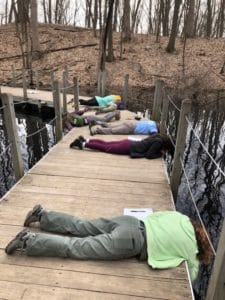 here and have grown through the ranks. There are not many places that hold onto people so long, which really speaks to the impact that The Nature Institute makes!
here and have grown through the ranks. There are not many places that hold onto people so long, which really speaks to the impact that The Nature Institute makes!
At the end of a long camp day, you’ll find kids covered in mud, wet from either sweat or water games, and happy. They spend the day discovering salamanders out in the creek, admiring cicadas that landed on a bench, and learning all about the animals and plants that live here at the preserve. It’s been amazing to be a part of such an enriching experience!
As we’ve moved into the fall, we’ve been thrilled to introduce new programs: Kids Night Out, Yoga + Hike, and Scout Badge Days. We’re currently working on revitalizing our field trip programs, as well as our tried and true TNI staples, like Knee High Naturalist and Discovery Nature Club. We are working hard to ensure the best possible experience for all of our guests!
Have an idea for a program? I’m always open to suggestions! Shoot me a message at lscull@thenatureinstitute.org.
Long-time volunteer Brent Schindewolf shares his love of nature with many children at The Nature Institute
A new generation? It’s only natural – by Frank Prager , Advantage News
March 29, 2020
Alton resident Brent Schindewolf has spent his adult life helping future generations understand the potential they have to make the world a better place. His passion for nature and the environment, along with his enthusiasm for working with young people, have resulted in a lifetime of mentorship for others.
That mentorship continues today. Schindewolf, 75, was born in the Milton area of Alton during the last days of Franklin Roosevelt’s presidency, just before the end of World War II. “That was before the Milton area was part of the city of Alton,” he says. After graduating from Alton High School in 1963, he attended Southern Illinois University, completing a bachelor’s degree in psychology. At that time, the SIU campus was still in Upper Alton. He worked for SIU at the same time he was going to school, earning 90 cents an hour working at the new campus location being built in Edwardsville. Schindewolf now lives in Alton with his wife of 52 years, Dee. They have two children, three grandchildren and five great-grandchildren.
Following his graduation from SIU, he enrolled in graduate school but was drafted into the Army a week later in 1968. During his deployment, he was stationed in Korea as a senior special weapons specialist on a classified nuclear support team. He achieved the rank of specialist five before his discharge in 1969. Returning home, Schindewolf was hired by the Alton School District and completed his master’s degree in education while working. During his 34 years with the district, he spent 30 of them as a principal over elementary schools, retiring in 2001. “I loved it,” he says of his career in education. He says working with elementary students was particularly satisfying because of the influence you can have on children at that age.
Always interested in nature, Schindewolf credits Alton resident and nationally known bird and nature expert Gene Sands with truly igniting a passion in him for birding and the environment. Schindewolf has written a book about his birding activities with Sands. Schindewolf and other Sierra Club members were instrumental in the creation of The Nature Institute in the early 1980s. The organization took steps to acquire the John M. Olin property in Godfrey from SIUE and designate it as the John Olin Nature Preserve. He was a member of its original board of directors. The 300-acre area on the bluffs above the Mississippi River is a dedicated Illinois nature preserve. The organization’s goals are restoration, preservation and education. Schindewolf conducts field trips at The Nature Institute for area students, educating them about the importance of the environment and their responsibility for taking care of the world. He also participates in summer camps for students.
“I love working with the kids,” he says. “It gives me a chance to recharge my batteries.” He tries to set the stage so they can have lives of enjoying nature. He points out it’s important to teach children not just to preserve what we have, but also to respect the way things should be. “Everything from not littering to not dragging weed seeds into nature areas on their shoes,” he points out. Books were major influences on his interest in the environment. “The one that is most important to me is the Bible,” he says. He says appreciating Creation is the main inspiration for his activities.
Other influential texts include “A Sand County Almanac” by Aldo Leopold. “It kind of started the environmental movement in 1949,” he says. Another book influencing him was the biography of John Adams by David McCullough. “His wife, Abigail, was the light of his life and worked side by side with him,” Schindewolf says. He says he feels the same way about the partnership he has with his wife. In addition to being an accomplished quilter, Dee is also an avid birder and they have traveled extensively together to birding “hot spots” around the country. Their home and property is a national certified wildlife habitat.
After retiring, Schindewolf became certified as a master gardener and a master naturalist through the University of Illinois extension program. The certifications required completion of an extensive curriculum as well as 30 hours of community service. Schindewolf explains they dovetail well with his activities with youngsters at The Nature Institute. When asked by U of I at the time if he had any special talents warranting his admission to the already full program, he told them, “I speak kindergarten.”
In his spare time, Schindewolf sells and collects Buck knives. He and his wife travel around the country displaying their collection. “I’m my own best customer,” he smiles. He is also active with the Fosterburg Baptist Church, and emphasizes the role of faith in his interest in nature. “My appreciation for the environment is directly tied to my appreciation for God’s creation,” he says. Schindewolf says people can foster wildlife habitation in any environment, from putting a feeder up outside an apartment in town to creating an entire habitat in more rural areas. “It’s important to take the initiative to influence others to do what they can with what they have,” he says.

photo by Frank Prager
Retired educator Brent Schindewolf conducts field trips at The Nature Institute in Godfrey for area students.
Winter Birds 101
Winter Birding along the Mississippi by Ramona Puskar, TNI education director
Winter is the time of year when snuggling up under a blanket next to the fireplace sounds like the perfect pastime, but let me challenge you to get bundled up, step outside and see what is going on around you. During spring, summer and fall, it is easy to see the beauty of the world around us. In the winter though, all we see is the drab browns and maybe some white snow, if we are lucky. What could there possibly be out there that would be exciting to see?
Enter the large migratory birds! Here on the Mississippi River, we have large bird species that migrate to the open waters of our major riverways. There are Bald Eagles coming down from the north looking for open water and plenty of fish, trumpeter swans – one of the most majestic birds I have ever seen, and of course our year-round residents; turkey vultures, red-tailed hawks, coopers hawks and many more. All of which are much easier to see in the winter without leaves on the trees. This post will serve as a guide for how to identify the migratory species as well as some common places to look for them.
Bald Eagle – Haliaeetus leucocephalus
The Bald Eagle is the national emblem of the United States and has been since 1782. It is also a spiritual symbol for native peoples. It is hard to believe that humans almost caused the extinction of this great bird. Bald Eagles are large birds with a heavy body, large head and a hooked bill. When soaring, bald eagles hold their wings straight out, this distinguishes them from soaring Turkey Vultures which hold their wings in a V-shape. The wingspan of a typical adult is around 80 inches, which is over 6 feet long. Adult birds have a white head and tail with dark brown body and wings. Juveniles have mostly dark heads and tails with mottled brown and white bodies. They get their white head and tail at about 5 years of age.
Here in the Riverbend, we most often see eagles during the coldest months of the year. They migrate down from Canada, Minnesota and Wisconsin in order to find food. There are a few eagles that stay here year-round, but a majority of the ones we see are “snow birds.” Bald eagles eat fish, mammals, gulls, and waterfowl, but they are not above scavenging on a carcass if one is available.
Trumpeter Swans – Cygnus buccinators
The trumpeter swan is a very impressive bird. It is our largest native waterfowl weighing more than 25 pounds with a wingspan of over 6 feet. Trumpeter swans were hunted to near extinction for meat, feathers and skins. Despite a major comeback, they still struggle with human disturbance in their breeding habitats. Trumpeter swans have snowy white plumage with a graceful long neck, black bill and black legs. Immature swans are gray brown. Both in flight and while swimming, trumpeter swans hold their necks very straight.
Trumpeter swans are mostly herbivorous, but will eat small fish and fish eggs on occasion. Young swans will eat aquatic insects before switching to a plant dominated diet. The large birds eat aquatic plants by dabbling in shallow water and will also forage on grain crops and tubers, especially in the winter. These swans typically choose a mate at about age 3 or 4 and are known to mate for life. Pairs will stay together throughout the year. Trumpeter swans with their impressive size can look very awkward on land due to short legs that are set behind their center of gravity. In the water they are very graceful and serene, but when it is time to fly, swans become a very powerful animal. They require at least 100 meters of open water to serve as a runway and they must run hard across the surface of the water to generate enough speed for takeoff.
Eagle Watching Guide
Now that you are interested in these impressive animals, where can you see them? The Audubon Center at Riverlands is a great place to go see all sorts of birds including waterfowl. If you are looking for swans, that is definitely the place to go. The staff generally has several scopes set up that you can look at the swans through and if there is an eagle nearby they usually have a scope or two trained on it. You can see bald eagles quite often at Riverlands too. Bald eagles do not stay in one place though so you may need to visit a couple of sites. You can drive up and down the Great River Road to watch the eagles hunting on the river or sitting in large trees above the road. The Alton Visitors Center and many of the other museums around the area have Visitors Guides that you can take to plan your eagle watching trip. Check out their website for events focused on eagles and to download the official Eagle Watching Guide.
A Sea of Yellow
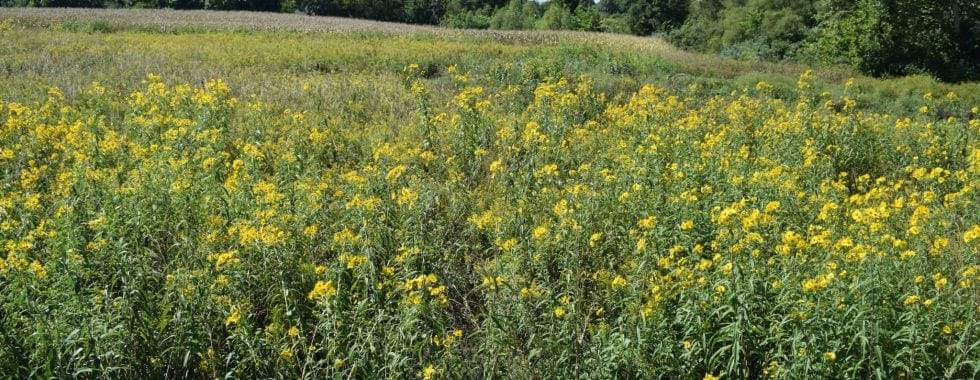
As summer comes to an end and the weather starts to get cooler, the colors of the prairie change from purples and pinks to different shades of yellow. The two families of plants that dominate during this time of year are Solidago and Helianthus; commonly known as goldenrods and sunflowers.
Everyone loves sunflowers. They are bright, tall, and very iconic of late summer. The butterflies are using these flowers as an important food source before migration. The flowers are relying on the bees and butterflies to act as pollinators. If you go out for a hike in a prairie that is covered in yellow flowers, look closely at the insects that are visiting. You will most likely get lucky and see some large bees. If you look closely at the back legs of these large bees, you will see the pollen baskets loaded with pollen that will both be deposited on other flowers as well as some that will end up back in the bee’s home. Pollen is an important protein source for raising bee larvae into adults.
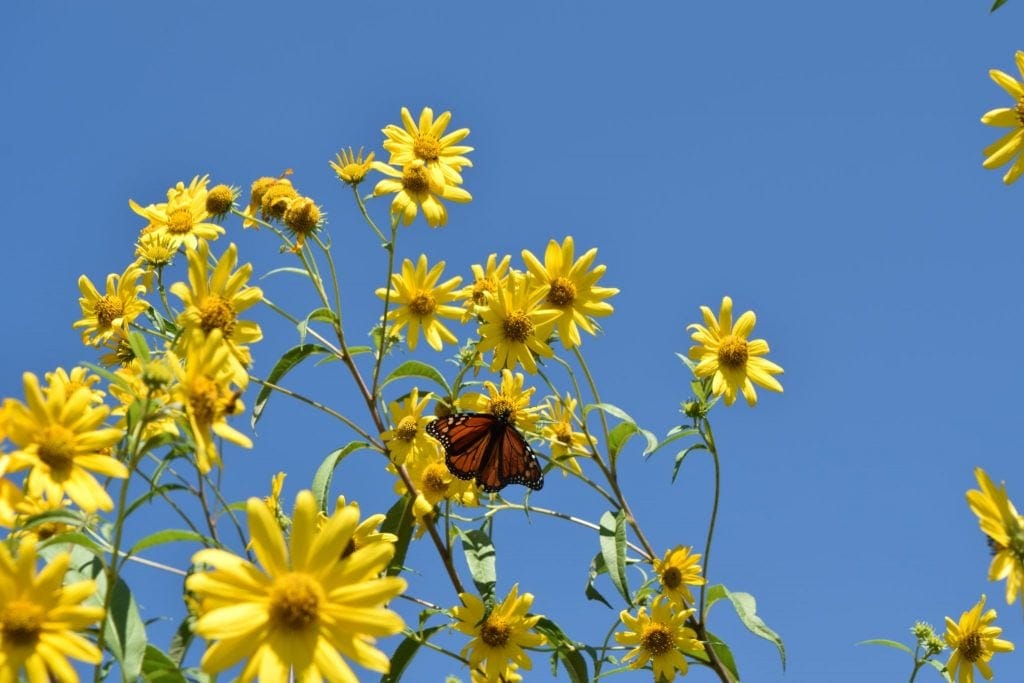
How ‘bout that goldenrod?!
Let’s talk about a plant that is not as well loved as the beautiful sunflowers. Goldenrod does not have a good reputation, but that’s because it has a case of mistaken identity. Goldenrod, like its name suggests, is bright yellow and blooms in the late summer and early fall.
Another plant, which deserves its noteworthy reputation, that blooms about the same time is ragweed. Ragweed has a very inconspicuous flower that is wind pollinated, not insect pollinated.
Why is this important? Wind pollinated plants have light weight pollen that can be easily picked up by even a slight breeze and carried for a fair distance. This wind dispersed pollen can be deposited in lots of different places, including the nasal passages of humans. Those of us with pollen allergies know exactly when the ragweed is blooming.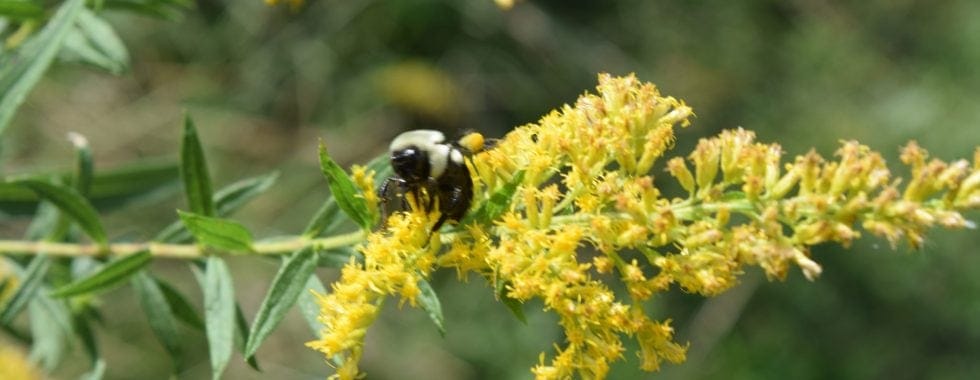
The goldenrods on the other hand have heavy pollen that must be dispersed by insects. The pollen is way too heavy to travel any distance on the wind, therefore this pollen is not going to make its way into our face.
This same relationship plays out with most plants. Plants with bold, colorful flowers are animal pollinated while plants with small, inconspicuous flowers tend to be wind pollinated.
What about the other allergy season, you may ask? Plants that are blooming in the spring are the trees. Oaks, maples and ash trees do not have showy flowers, but the pollen is everywhere!
So next time you head out on a hike, don’t fear the goldenrod. Enjoy the bright beautiful flowers and spot some bees doing important work.
DIY Family Activity
![]()
Below, you will find a few activities that will help you explore the insects that rely on the goldenrod for food.
Activity 1:
Step 1: Gather a clipboard, white piece of paper, and head out to a field of goldenrod.
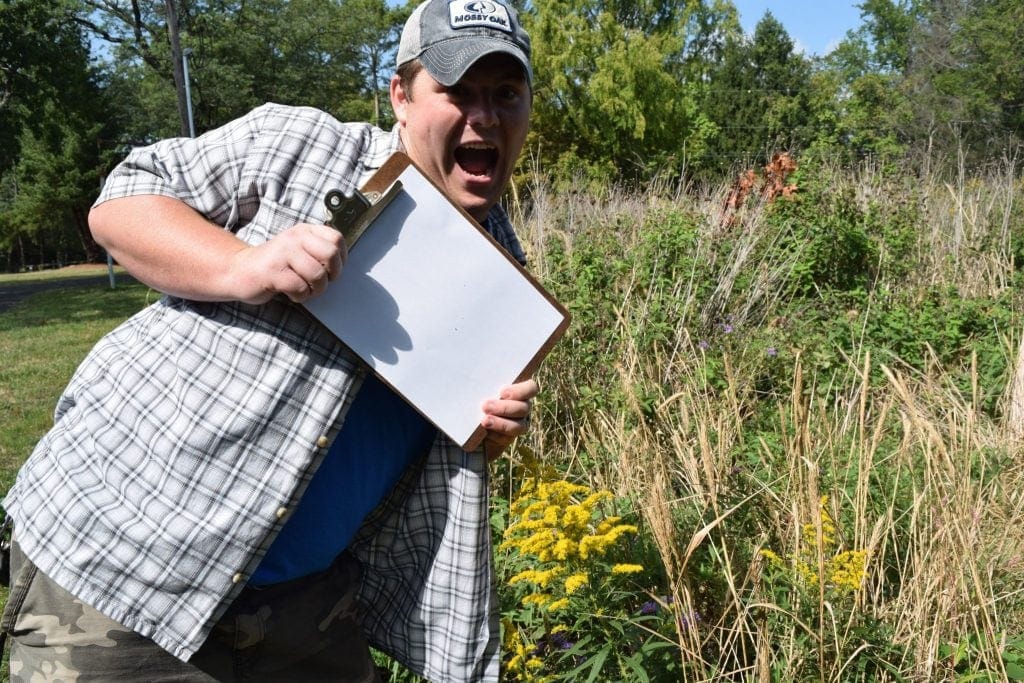
Step 2: Put the white piece of paper on the clipboard. With the flower still on the plant, smack a stem of goldenrod flowers onto the white piece of paper.
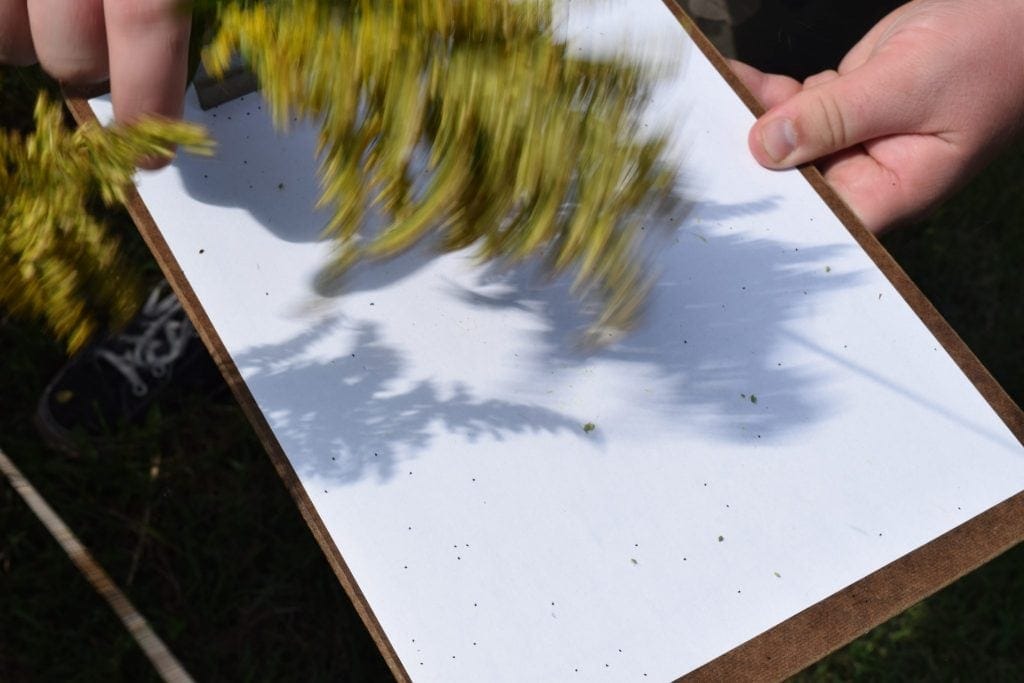
Step 3: Look as what falls out of the flowers. You might find a crab spider, a number of beetles, or lots of other insects.
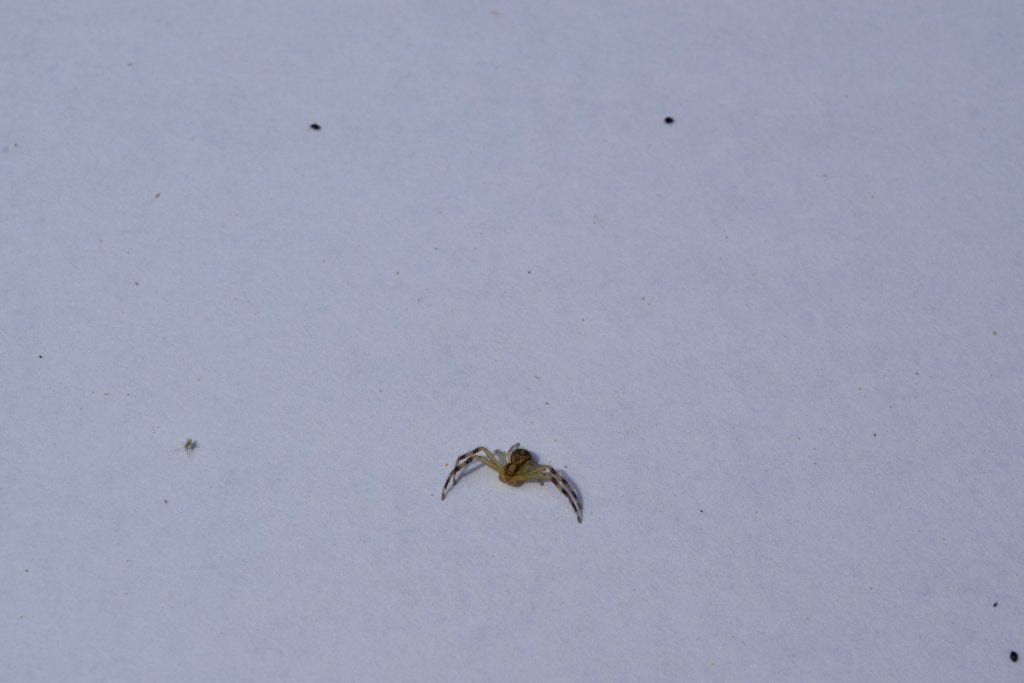
Step 4: Make sure to look at the whole plant, you might get lucky and find a praying mantis sitting and wait for a yummy snack.
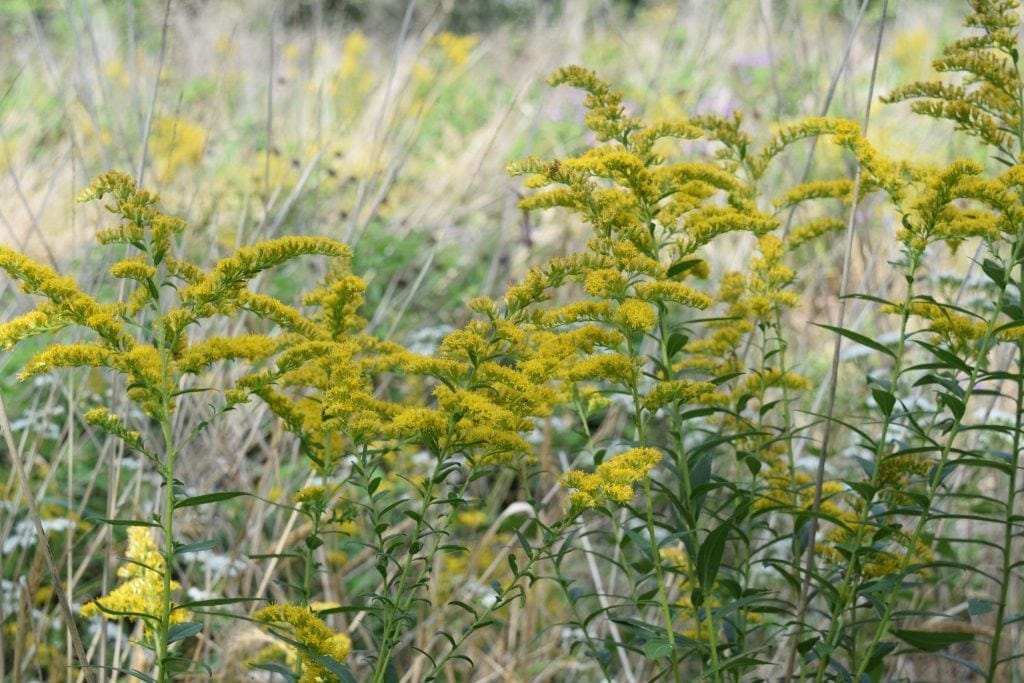
Activity 2:
When the goldenrod has died back for the winter, you can easily spot the galls in the stems. The galls are made by flies that lay eggs inside the stem and the plant grows a home around that egg, which just looks like a ball inside of the stem. The fly larvae then eats the plant material around it and either becomes an adult and flies away or gets eaten by a bird. You can cut open the gall to look for the fly larvae. Always be careful with knives and provide proper supervision to children when around sharp objects.
Life from Death
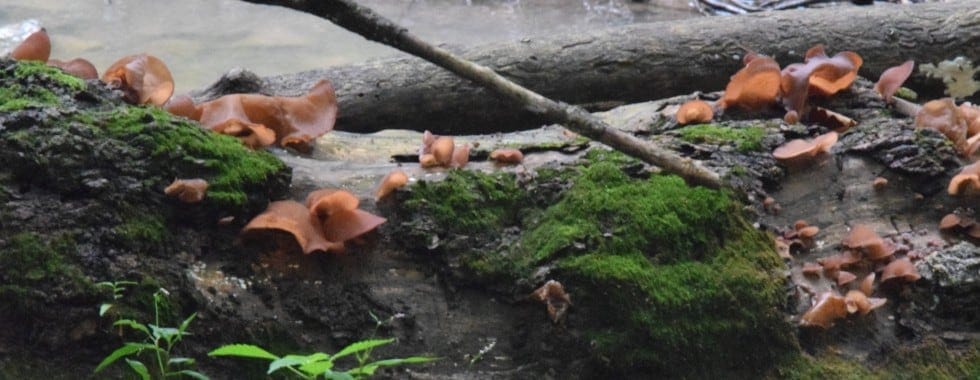 Recently, while the forest was quiet and no kids were stomping along the trails, Patti and I took a long hike down into the preserve. We hiked back towards Beaver Falls and then up through the prairie. Along the way we searched for mushrooms, butterflies, and any other interesting sights. As we were hiking we noticed a lot of fallen trees. We have lost several large trees and parts of trees near the buildings due to weak roots and branches, insect activity and high winds. We expected to see many trees down but what we were most interested in was what was living on and around the fallen behemoths. The fungus families were going nuts last week after all the rainy, humid weather.
Recently, while the forest was quiet and no kids were stomping along the trails, Patti and I took a long hike down into the preserve. We hiked back towards Beaver Falls and then up through the prairie. Along the way we searched for mushrooms, butterflies, and any other interesting sights. As we were hiking we noticed a lot of fallen trees. We have lost several large trees and parts of trees near the buildings due to weak roots and branches, insect activity and high winds. We expected to see many trees down but what we were most interested in was what was living on and around the fallen behemoths. The fungus families were going nuts last week after all the rainy, humid weather.
We saw chantrelles, corals, bolettes, russulas, elephant ears and so many more species. Mushrooms are really awesome to study and try to understand. They are neither plants nor animals and have really cool reproductive strategies. You can come out and learn more during our Foraging for Fungi program on October 1st. As neat at fungi is, I want to focus on the death they are built on.
It is always sad to lose a tree, but when a tree dies it becomes host to hundreds of other organisms. Standing dead wood will host nesting animals such as woodpeckers, owls and snakes. Tons of insects take up residence and break down the wood as well as become food for other animals. And the fungi take advantage of the lack of defense and they send mycelium into the roots, and trunk of the trees to start the process of decomposition. Eventually that standing dead tree will fall over and become a log on the ground and continue to host creatures and decompose until there is nothing left. Under a fallen logs you are likely to see pillbugs, worms, millipedes, centipedes, snakes, ants, termites, spiders, lizards, and bess beetles (just to name a few). There is a whole ecosystem underneath that log.
Imagine a world devoid of these decomposers. And just for the fun of it let’s include the icky ones too, flies and vultures! If there were no decomposers, there would be trash and dead things everywhere. Animals hit along the road would stay there, trees would die and stay whole, leaves would pile up and up, and nothing would be recycled back into nutrients for new plants. I can’t imagine living somewhere like that, can you?
So next time you walk by a log, turn it over and explore the creatures underneath. Next time you drive by some road kill, thank the flies that will get that job done, and next time you see a Turkey vulture flying above your head, wish it happy hunting. Without these creatures doing what they do best we would be living in a very smelly, messy world.
-Ramona Puskar, education assistant
YAY Camp!
We have entered week number 2 of Camp Season. Our staff have been trained and prepared for their groups and the kids have been signed up since March. Now it is just a matter of putting feet to our plans and giving the kids a great week outdoors. During pre-k week campers came for half days Monday -Friday and we took them fishing, on hikes, did some water games and told them stories. At the end of the week they performed the TNI Camp Song and a song about frogs for their parents, siblings, grandparents and everyone else that came out to watch them. The campers also took time to write thank you cards to local emergency support personnel in Calhoun County. (more…)
Aaaaghhhh SNAKES!!!!!!!
As the weather gets warmer, I am seeing more pictures of snakes on my Facebook newsfeed. Many of the comments following those pictures include sentences like, “The only good snake is a dead snake” and, “Kill it!” or something to that effect. I understand that snakes are not the most well liked creatures and everyone has their own reason for disliking them, but most of the time it is our own ignorance that creates fear of animals, especially snakes. This post will hopefully help to dispel some of the fear by lending some information about snakes, and giving us an understanding of their place in the world. (more…)
#NatureInstitute
The trails at The Nature Institute are open today and 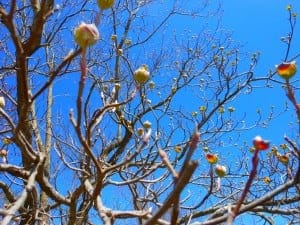 there are so many things to see. The trees, birds and frogs all know that spring is here and they are putting on a show. There are frog and salamander eggs in some of the ponds, red buds, sassafrass and dogwoods are full of blooms. The birds have been singing for weeks! We have spotted a pair of bluebirds building a nest, and we have a pair of hawks that are preparing for their own nestlings to arrive. The barred owls are searching for mates and laying eggs as well. Spring is a time of activity for all plants and animals.
there are so many things to see. The trees, birds and frogs all know that spring is here and they are putting on a show. There are frog and salamander eggs in some of the ponds, red buds, sassafrass and dogwoods are full of blooms. The birds have been singing for weeks! We have spotted a pair of bluebirds building a nest, and we have a pair of hawks that are preparing for their own nestlings to arrive. The barred owls are searching for mates and laying eggs as well. Spring is a time of activity for all plants and animals.
This spring, we would like you to participate with us in a photo phenology campaign. Phenology is the study of seasonal phenomena. Phenologists watch to see when the migrating birds arrive and leave, when the flowers bloom, when the trees leaf out and when the insects hatch, in addition to many other things. We invite you to gather photographic evidence of our land through the seasons. (more…)
Winter Recap and New Endeavors
Spring is on its way. We have heard frogs in the ponds, the birds are singing happy tunes and the plants in the greenhouse have started sprouting. This weekend we held a Flying Wild workshop for educators, and the weather was fabulous. Our group took a hike to the Olin Nature Preserve to find and identify some birds, then we came back in and participated in a few activities from the guide that teach about bird bills and feathers.
One set of the questions that I have received many, many times since starting at TNI last April is, “Do you work all year?” and, “What do you do in the winter?” The answer to both questions is an easy one. (more…)
Winter
 Winter is one of those words that create a clear separation between people. There are people who HATE winter, and people who LOVE winter. And then you have people that sit on one side of the fence, but change their leaning on certain aspects of the season. Where do you fall?
Winter is one of those words that create a clear separation between people. There are people who HATE winter, and people who LOVE winter. And then you have people that sit on one side of the fence, but change their leaning on certain aspects of the season. Where do you fall?
I tend to dislike much of winter. I don’t like to be cold or have to bundle up with all my winter gear. I hate tromping through the muck that lasts for three months and tracking salt inside all the time. Winter tends to be drab and gray most days in central Illinois and you may not see the sun for weeks at a time. All these things make winter a necessary evil for me. But when I think I can’t take it any longer and want to move down to Florida, the sun comes out and illuminates the woods like it never can in the summer. That is what I love about winter.
Light bounces off the bark of sycamores, maples and oaks and I see things in a new and different way. These random sunny days I will go out for a walk and notice footprints; so many footprints from deer, turkey, raccoons, squirrels, coyotes and foxes. If you have bird feeders (that you keep stocked) you will daily see birds that you never notice in the summer. And snow…but only the fresh fallen stuff. Snow is beautiful. It is clean, pure and covers everything in a blanket of white. I only like snow when it has been untouched by the hand of man though. I grew up living next to a state highway and as soon as the snow plows would drive by our beautiful snow would be ruined with salt, mud and any trash picked up along the way. (more…)
Lessons from a Hunter
In the last post, I highlighted one way hunting and conservation work together. This week, I am continuing that theme with lessons learned from a hunter. As a teenager, my dad would take me duck hunting and I most enjoyed sitting in the blind watching the ducks and geese fly over. Some of my favorite nature experiences occurred while sitting in a duck blind, and there is a practical reason for that. While in a duck blind, I am quiet, still, observant, and patient. The hardest part is getting up before sunrise. Hunters who consistently practice these skills will have some amazing wildlife encounters. The best part is you don’t have to be a hunter to cultivate these skills; you just have to go out and practice them.
Lesson One: Sit Still and Be Quiet
In today’s age of music at the click of a button, television shows that travel with you, and always being connected, we have lost the art of sitting still and being quiet. Have you ever heard squirrels hopping through the leaves? They sound as though they are much larger than you know. Have you ever stopped to listen to the wing beats of a bird flying by, or watched a squirrel dig up a buried acorn? These experiences can only be had if you are able to sit still and stay quiet. Hunters know that a deer great hearing and are very skittish. When they move or make noise they will scare the deer and lose out on an opportunity. When you sit quietly out in the woods the animals will forget you are there and go about their business. You will see something new. Even I am guilty of not being still and quiet most of the time, we live in a culture of go, go, go, and we miss out on some amazing things (more…)
Duck Hunting, Conservation and a Black Lab
Early in the morning, many times just after the sun makes its appearance; you may hear the loud cracking of a shot gun during this season of hunting. Men, women, and even some young hunters will wake up early, sit quietly for long hours in a blind and wait for their prize to appear.
You may wonder why I am writing about hunting and how TNI can be ok with it. Well, it may surprise you to hear that hunters are some of the most loyal conservationists. When you take the time to think, it makes sense. A hunter must be willing to save the habitat that allows his prey to live in order to continue doing what he or she loves. The best example of this relationship between hunter and conservation is the Federal Duck Stamp. On Cornell University’s Bird Academy site, there is an article titled, “How Hunters and Artists Helped Save North America’s Waterfowl”. It is a great read and explains in detail how the Federal Duck Stamp works. (more…)
Birds that Dance
As the migration of waterfowl commences, I am reminded of the plight of the cranes. Have you ever seen a group of sandhill cranes flying above you? If not, you are definitely missing out on one of the great nature experiences.
Sandhill cranes are tall birds that fly from Canada to the Southern US in the fall. They are quite abundant in their range and many people have the opportunity to see them on a fairly regular basis. My first experience hearing and seeing them was a cold December day when I was living in Milford, Ohio. They flew over and having never heard that sound before I was awestruck. My mentor explained what they were and I later learned more about them. The most amazing experience I have had in regard to the sandhill cranes took place at Jasper-Pulaski Fish and Wildlife Area near Medaryville, Indiana. Sandhill cranes gather in groups in the thousands. The last count taken this year estimated 7,010 on October 29. I was there about three years ago and witnessed this mass gathering. The noise and activity was awesome. (more…)
A Natural Play Area
This spring TNI staff installed new equipment and updated some of the existing recreation for our natural play area. Before the update, our play area included the eagle’s nest, burrow, fossil dig, a climbing log, alligator pit, an amphitheater and a fire pit. In our newly updated play area, we have added Honey’s Hive, the Bobcat Walk, the Mississippi Mud Kitchen, a Human Sundial, an art station, the Geology Garden in memory of Judy Hoffman and a climbing wall. The Eagle’s Nest was moved and improved on and the fire pit was adjusted to accommodate larger groups.




